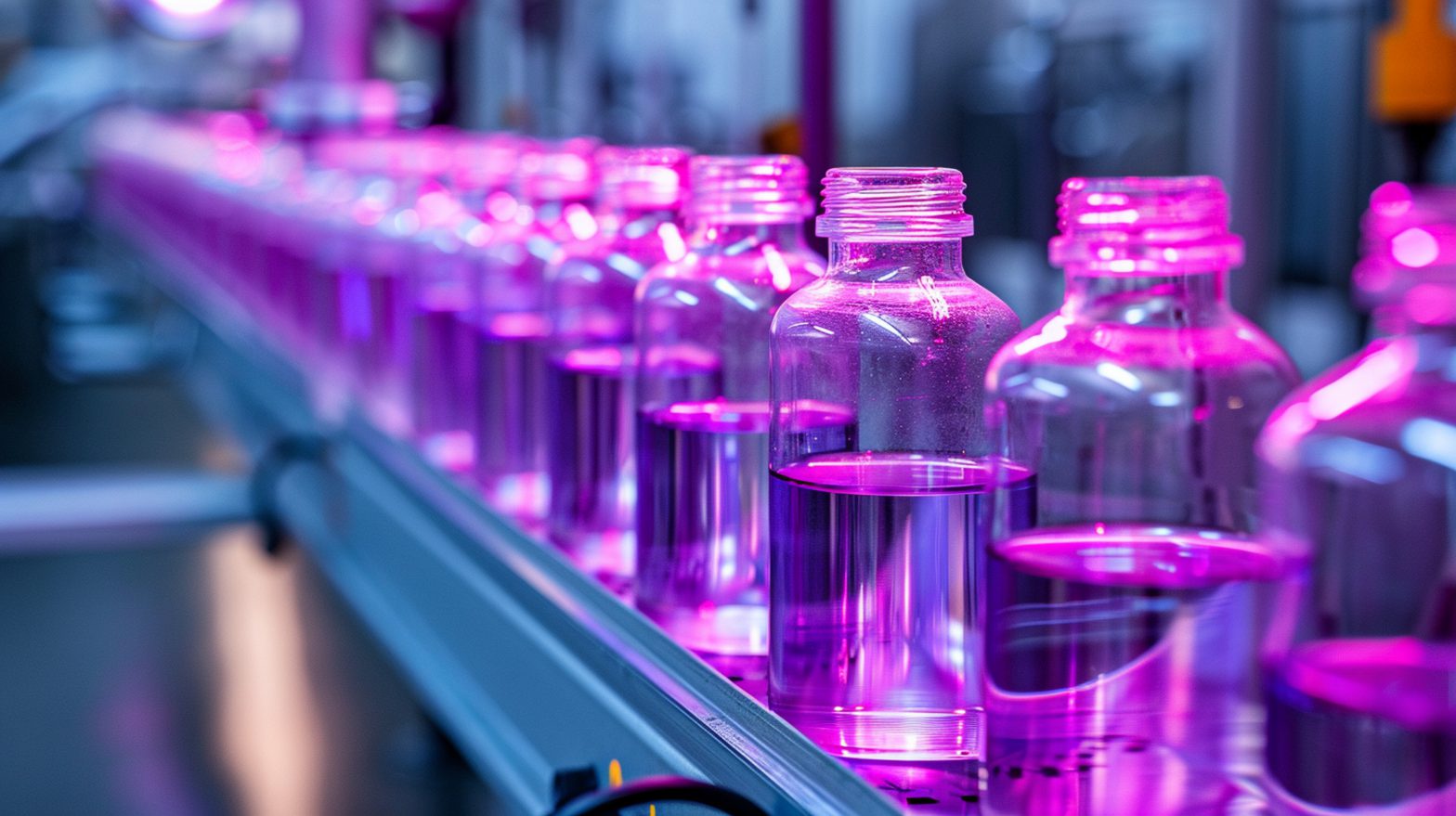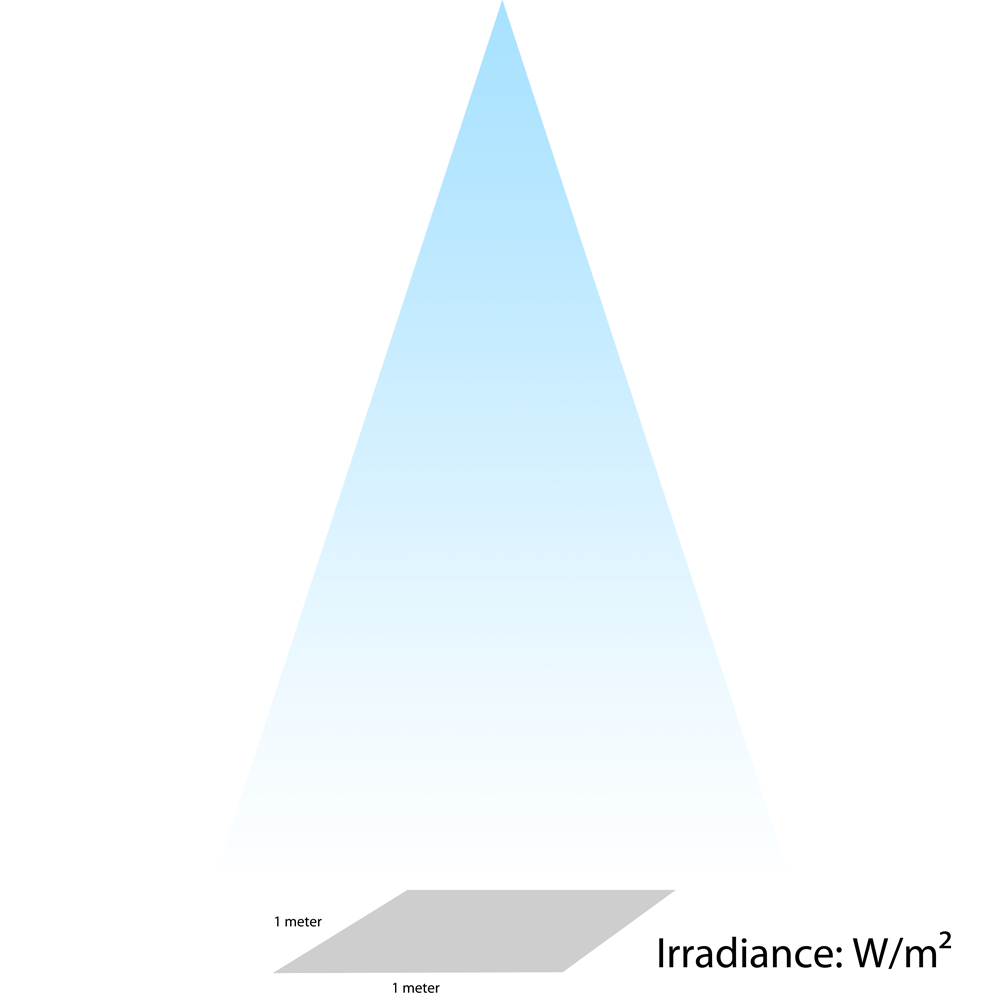
How to Determine UV-C Irradiance Requirements for Disinfection Applications
Home /
Blog /
cleanUV™ Sterilization & Disinfection /
How to Determine UV-C Irradiance Requirements for Disinfection Applications
How to Determine UV-C Irradiance Requirements for Disinfection Applications
With the rapid growth of UV-C LED applications in germicidal and disinfection applications, there is a growing need to quantify and determine whether or not a particular UV-C lamp or setup will accomplish the disinfection objectives. Unlike regular lighting products that we can visually confirm if it's "bright enough," UV-C is invisible to the naked eye, and this can make it especially challenging from a measurement perspective. In this article, we will go over the primary measurement methods and principles, and then work through a few examples that will help work through the steps needed in determining the irradiance requirements for a particular setup.
Dosage = UV Amount + Time
When designing for UV-C disinfection, we need to start with UV-C dosage, because the ultimate goal is to achieve a certain UV-C dosage needed to inactivate the pathogen. But first, what exactly is dosage, and how is it measured?
UV-C dosage, also called exposure dosage or fluence, is a way to measure how much total UV-C energy has radiated a particular surface. This is the most crucial element in UV-C system design, because UV-C dosage is the primary determinant in whether or not we have successfully achieved pathogen inactivation.
Dosage is determined not only by the strength of the UV-C that falls on a surface, but also how long that surface is exposed to the UV-C radiation for. In other words, all else equal, a UV-C lamp with half the strength can achieve just as much UV-C dosage if it is used for twice the amount of time.
The strength of the UV-C that falls on a surface is called irradiance, and is measured in W/m² (or some variant of power per surface area). The exposure time is measured in seconds.
The simple form of the formula is shown below:
Exposure Dosage (J/m²) = UV Irradiance (W/m²) x Time (seconds)
We can also verify this by seeing that the units are in agreement here (1 Joule = 1 Watt-second).
Confused about UV units? See our calculator here.
What exactly is UV-C irradiance?
The trickiest, and perhaps most essential component in this equation is the irradiance value. Irradiance is the measure of how much energy falls on a particular surface. Irradiance can be influenced by three primary factors: (1) UV lamp strength, (2) distance from the lamp, and (3) angle relative to the lamp. It may be helpful to think about regular light bulbs behave - a very bright light bulb positioned far away and angled away from a surface, for example, will not provide sufficient illumination on a table surface.

Caution: Don't confuse irradiance watts with electrical watts! While it can be tempting, it is not enough to rely on the electrical rating of a UV lamp for two reasons. First, the wattage rating of an electrical lamp refers to the amount of electrical energy it consumes. This is different from how much UV energy it produces ("radiometric watts"). A 20 watt UV lamp, for example, may only produce 2 watts of actual UV-C energy (i.e., it has an efficiency value of 10%). Secondly, even if we know how many radiometric watts a UV lamp produces, we do not know how and where the UV energy is distributed. Irradiance is strictly a measure of UV-C at a particular position and distance from a UV lamp.
How to Interpret Manufacturer UV-C Irradiance Charts
If you consider what UV-C irradiance values represent, you will be able to appreciate the immense difficulty in comparing UV-C products across different manufacturers. The best way to perform an accurate comparison is to look at the irradiance charts of UV-C products to determine the level of UV-C irradiance you can expect. If a manufacturer does not publish an irradiance chart, or doesn't know what you're asking for, there is a good chance the manufacturer doesn't understand the product or principles behind UV-C disinfection.
Below are screenshots from the irradiance charts published for our cleanUV™ LED strip light, with annotations in red. The values in each square represent the irradiance values, in W/m², that can be expected at that particular position, relative to the UV-C source. Here is a virtual representation of the chart's orientation relative to the UV-C LED strip light:
For example, we can use this chart to find that the irradiance value at a distance of approximately 6" and a 45 degree angle would be 0.13 W/m², and a point 12" away but directly perpendicular to the UV-C LED strip would have an irradiance value of 0.19 W/m².
Quite intuitively, you will see that the irradiance values are higher the closer one is to the UV-C source, and the closer one is to the perpendicular axis. In addition, by using irradiance charts, you are able to much more effectively estimate the amount of UV irradiance you can expect from a UV-C source at a given distance and angle. There are no hard and fast rules or formulas to calculate these values, so irradiance charts are typically your best bet.
Example 1: Achieve a Dosage of 50 J/m²
Suppose you're tasked to design a UV-C system with a target dosage of 50 J/m². How do we do this?
Luckily, you aren't given any further constraints, so you can achieve this in many different ways.
First, we take the formula below:
Exposure Dosage (J/m²) = UV Irradiance (W/m²) x Time (seconds)
...and see that as long as UV irradiance multiplied by time gives us 50 J/m², we meet the requirements here. For example, 50 W/m² for 1 second, 25 W/m² for 2 seconds, or 1 W/m² for 50 seconds all result in 50 J/m² and would acceptable ways to reach the required dosage.
Example 2: Achieve a Dosage of 50 J/m² within 25 seconds
In this example, we are given the same dosage target but a time constraint.
Plugging in the values to the same formula and solving for UV irradiance:
50 J/m² = UV irradiance x 25 seconds
...gives us an answer of 2 W/m².
Using the irradiance charts, we can search for locations that provide 2 W/m² or more, and be confident that these areas will receive enough UV-C radiation to reach the target dosage of 50 J/m² within the 25 second time limit.
Example 3: Determine dosage range of cleanUV™ LED strip light on a 9 square inch surface from 6 inches away after 1 minute
Our last example may seem the most daunting due to the number of conditions we have to contend with. After we break it down, however, we will see that it is actually quite simple if we look up the exposure dose charts, which are similar in concept to the irradiance charts shown above, but are shown in exposure dose values based on certain timeframes.
The example question asks for dosage after 1 minute of exposure, so we first pull up the chart that shows exposure dosage amounts after 1 minute (page 2 of the PDF). Next, since we are looking at a cross section of the LED strip, the 9 square inch area would also be represented as a cross section, and therefore be represented as 3 inches wide. Since each square represents one inch, we look for the three squares that represent one side of the 9 square inch area that is located 6 inches away from the UV-C source.
We find that the numbers are 23.6, 24.3 and 23.6, which means that our range of exposure dosage on this surface area would range between 23.6 J/m² and 24.3 J/m².
Other Posts
Browse Waveform Lighting Products
A-Series LED Bulbs
Our A19 and A21 lamps fit in standard lamp fixtures and are perfect for floor and desk lamp fixtures.
Candelabra LED Bulbs
Our candelabra LED bulbs offer soft and warm light output in a decorative bulb style that fits E12 lamp fixtures.
BR30 LED Lamps
BR30 lamps are ceiling lamps that fit in residential and commercial fixtures with 4-inch or wider openings.
